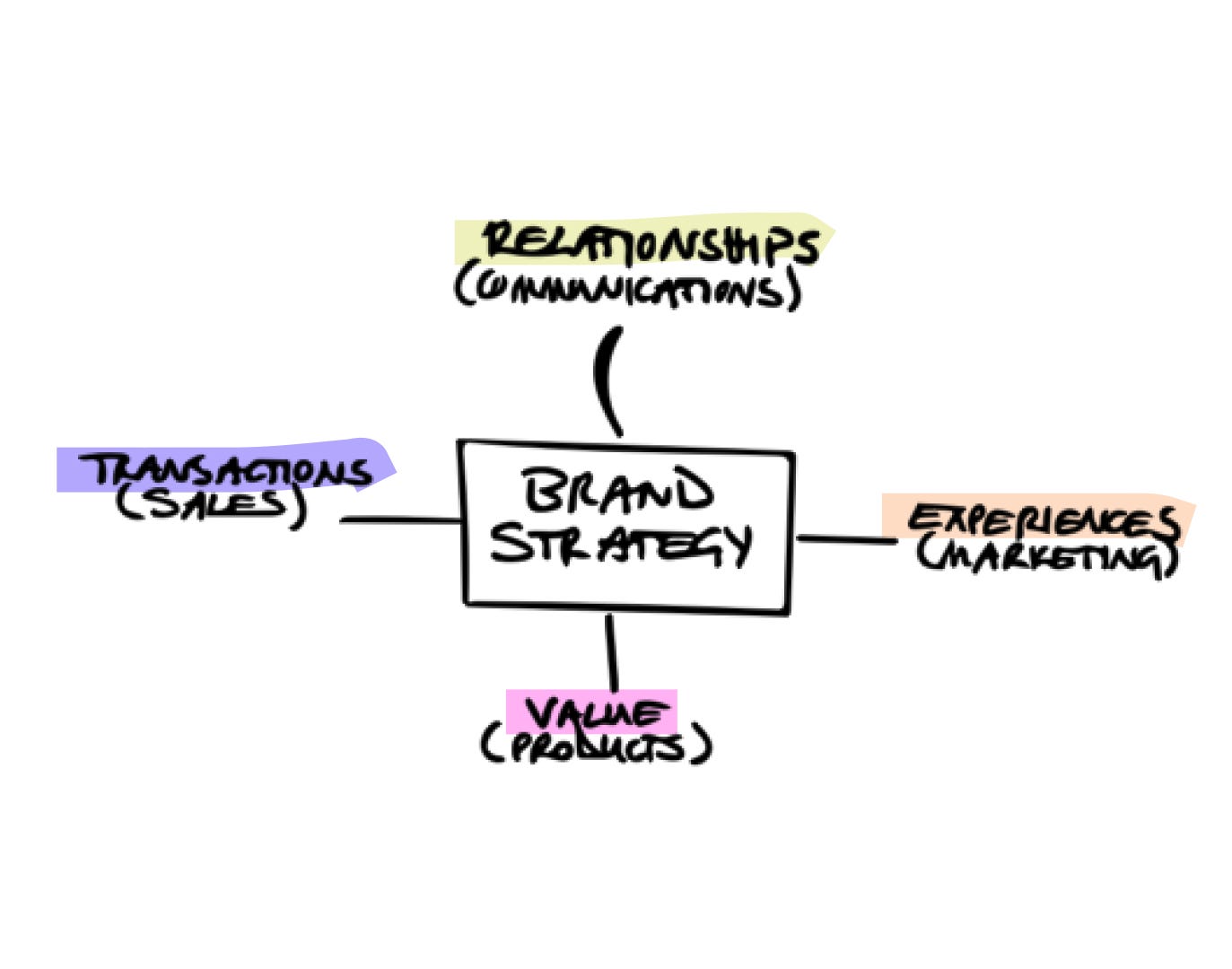The role of brand strategy in b2b
There’s a misconception in b2b marketing that professionals are driven by rational arguments like pricing and decision making is disconnected from emotional triggers. Brand building and storytelling are considered either a consumer-facing task to many b2b marketers, or squeezed into the top of the sales funnel as brand awareness.
Big opportunities are lost here.
The brand’s role in b2b is not aspirational, as it often is with endconsumers, but relational — focused on building trust and credibility by being a partner to its customers, and solving their problems in the most efficient, effective way possible.
B2B has long existed in a bubble, insulated from the mainstream consumer world. But the professional doesn’t turn off his human behaviours or decision making biases just because he clocked in. And social media has blurred, almost erased, the lines between the personal and professional in the past two decades.
Marketing to professionals is a tricky business
The question arises: how to address, connect with and sell to b2b customers as channels and behaviours converge across the professional and private.
As brands grapple with leveraging and managing multiple channels across off- and online, professional audiences are becoming despondent: unresponsive to most marketing efforts yet secretly thirsting for real added value.
Audience engagement is shifting from public endorsements and word of mouth to covert consumption and fragmented customer journeys.
The sales force, once the crown jewel in the b2b marketing machine, is but one of many ways to create value for customers today — think digital value creation via self-service offerings or chatbot integrations.
Brands are now challenged to connect with their audiences in more subtle, meaningful ways — and view value creation are more than a marketing tactic
Some brands are already thinking beyond purchase into retention and co-creation with their b2b customers. While others are still trying to get their digital or omnichannel transformation under wraps, not realizing that it’s a continuous work in progress.
And their marketing? It’s being handled by agencies or consultancies, who themselves are transforming their business models, each biting into the other’s piece of the pie, chasing growth for their shareholders.
This leaves brands at a delicate inflection point, somewhere between benchmark and irrelevance. And nowhere near added value for customers.
CMOs and business leaders are realizing what most agencies are unable to see objectively: brand strategy is most effective when done upstream, and before it translates into briefs, because it pulls all the threads together.
Creative, media, content, data strategy and the likes further break down brand strategy into their respective disciplines. But to ensure consistency across the brand(s) and create the necessary experience synergies between products, departments and customer interactions, the blueprint needs to come from top-down.
Brand strategy specifically needs a big-picture perspective to be effective. And that goes beyond positioning.
Comprehensive brand strategy considers the entire portfolio, how brands interact within that portfolio, the relationships across stakeholder and audience groups (customers, partners, influencers, employees, investors).
Brand strategy answers how marketing and communication are used to connect, engage, sell and create value for each audience group.
In my experience, this is where b2b brands take too many shortcuts. Like directing efforts toward a few stakeholder groups, or not connecting it all under one experience.
The reality is, it’s hard to manage a brand, no matter how big or small. And the business of building and growing a brand is an exercise in consistency and creativity.
Customer behaviours shift, stakeholders are increasingly diverse, channels multiply and tactics constantly evolve. To move with customers and build trust, brands need a clear picture of how these game pieces fit together, and a practical plan to put into action.

Brand strategy is the context and direction that product, marketing, communications and sales execute. It considers the perception, behaviours and relationship of the brand’s stakeholders and customers.
As b2b marketing grows more complex, the need for a brand strategy that unifies story, touchpoints and stakeholders is critical. Brands that prioritize short-term execution over long-term strategy risk losing share in an increasingly homogeneous product landscape.
The opportunity lies in stepping back to see the full picture — how each piece, from positioning to sales, aligns with the brand’s overarching objectives.
A well-defined strategy is more than positioning or channel selection. It creates value across every audience group and interaction, building a reputation in the process. The best b2b brands deliver value that trascend the medium.